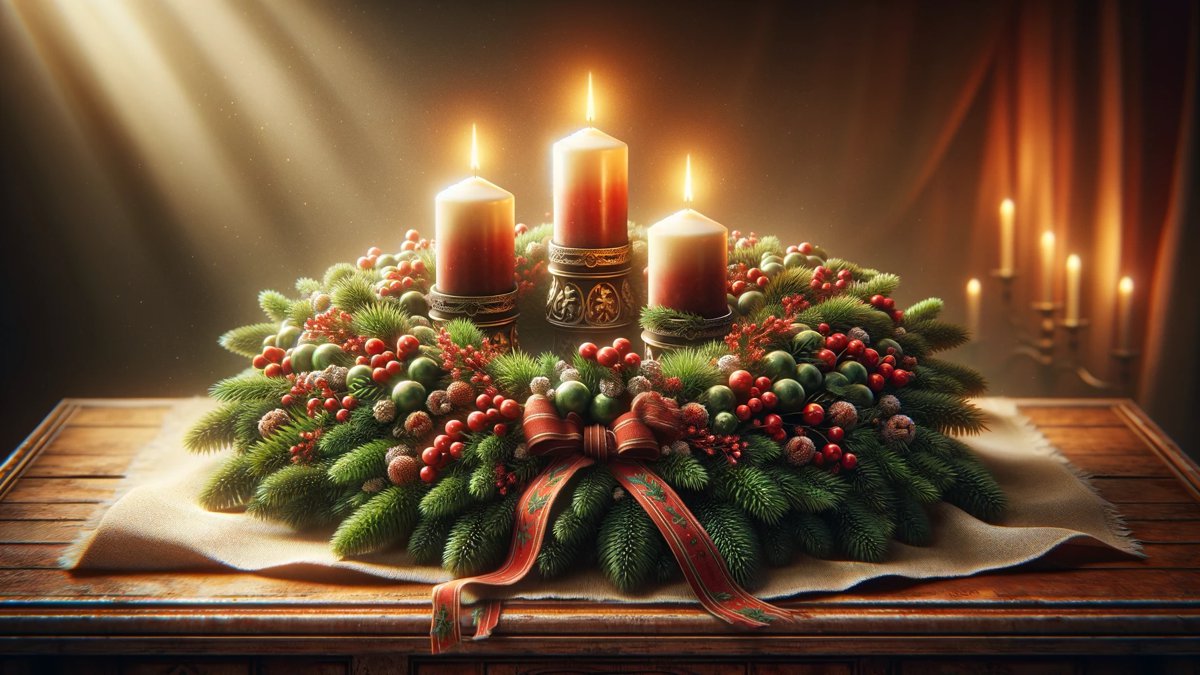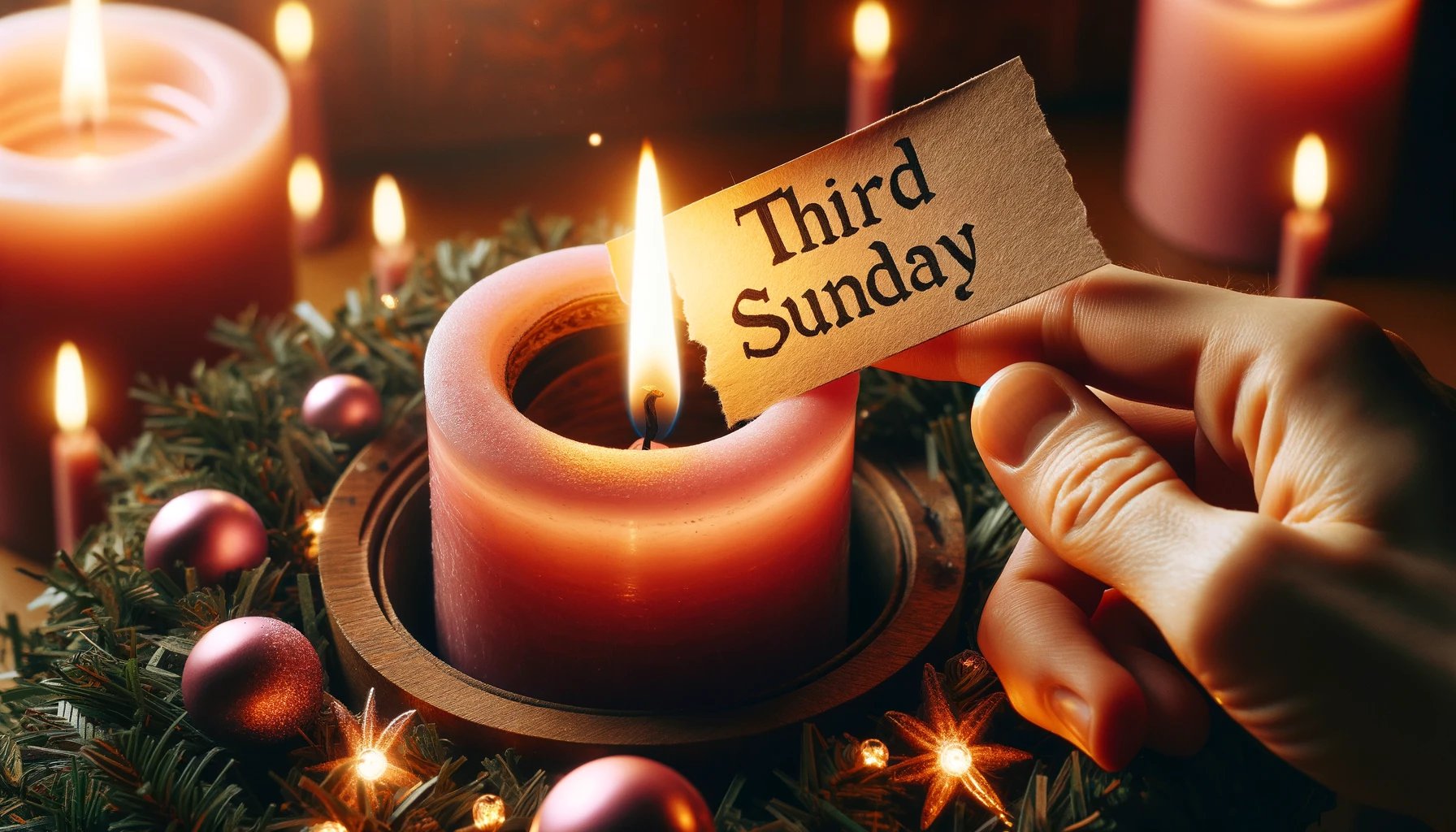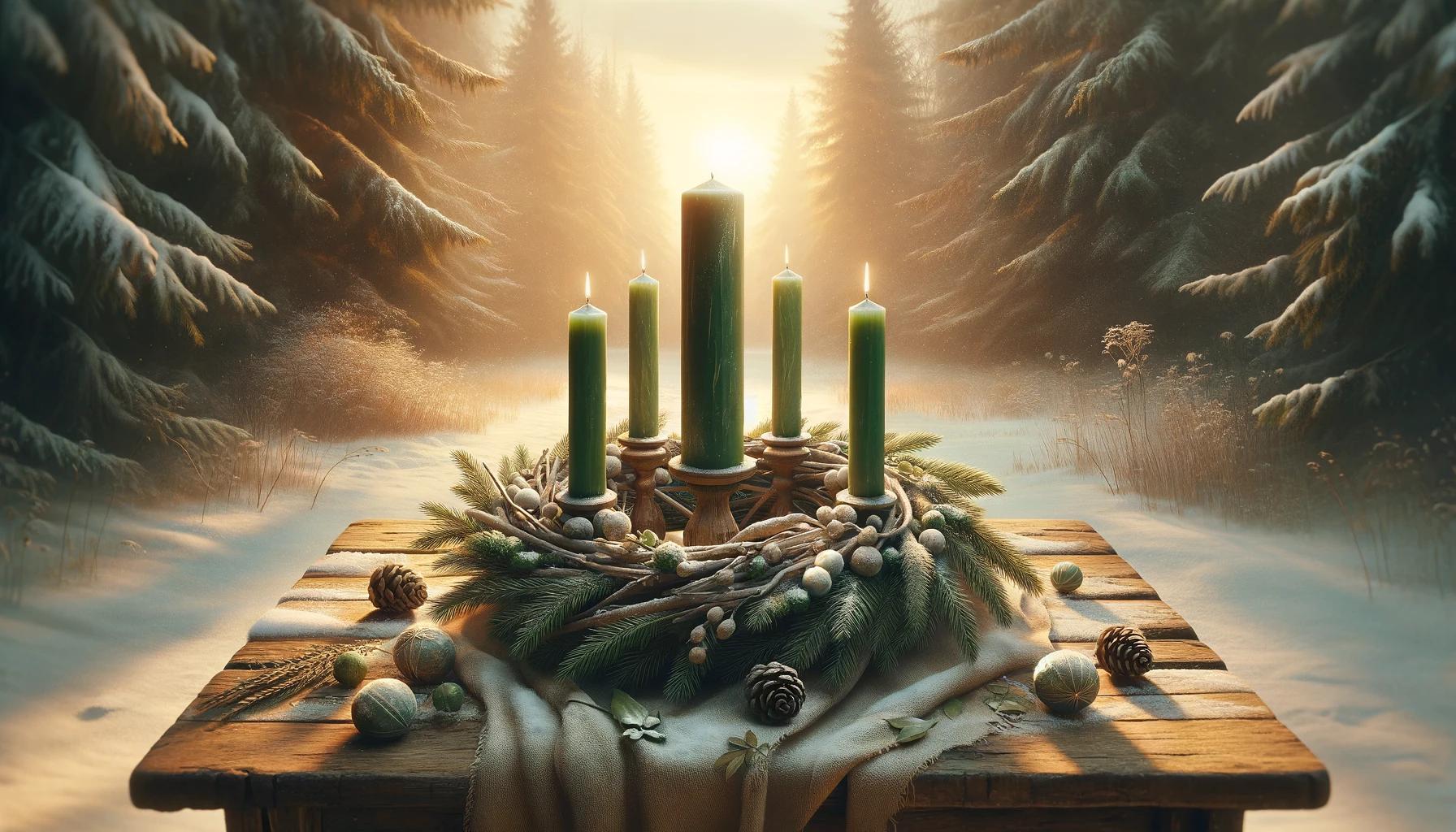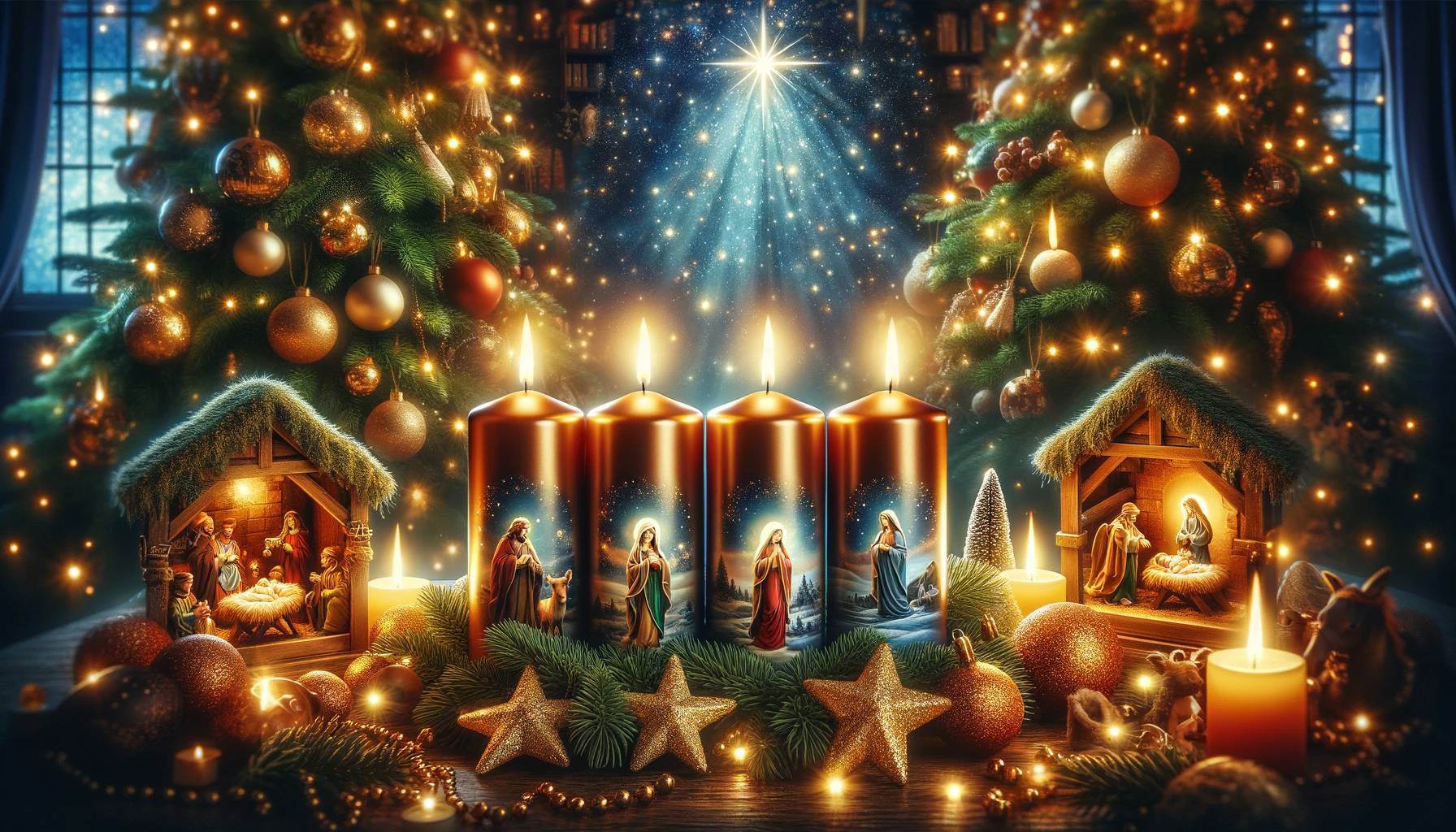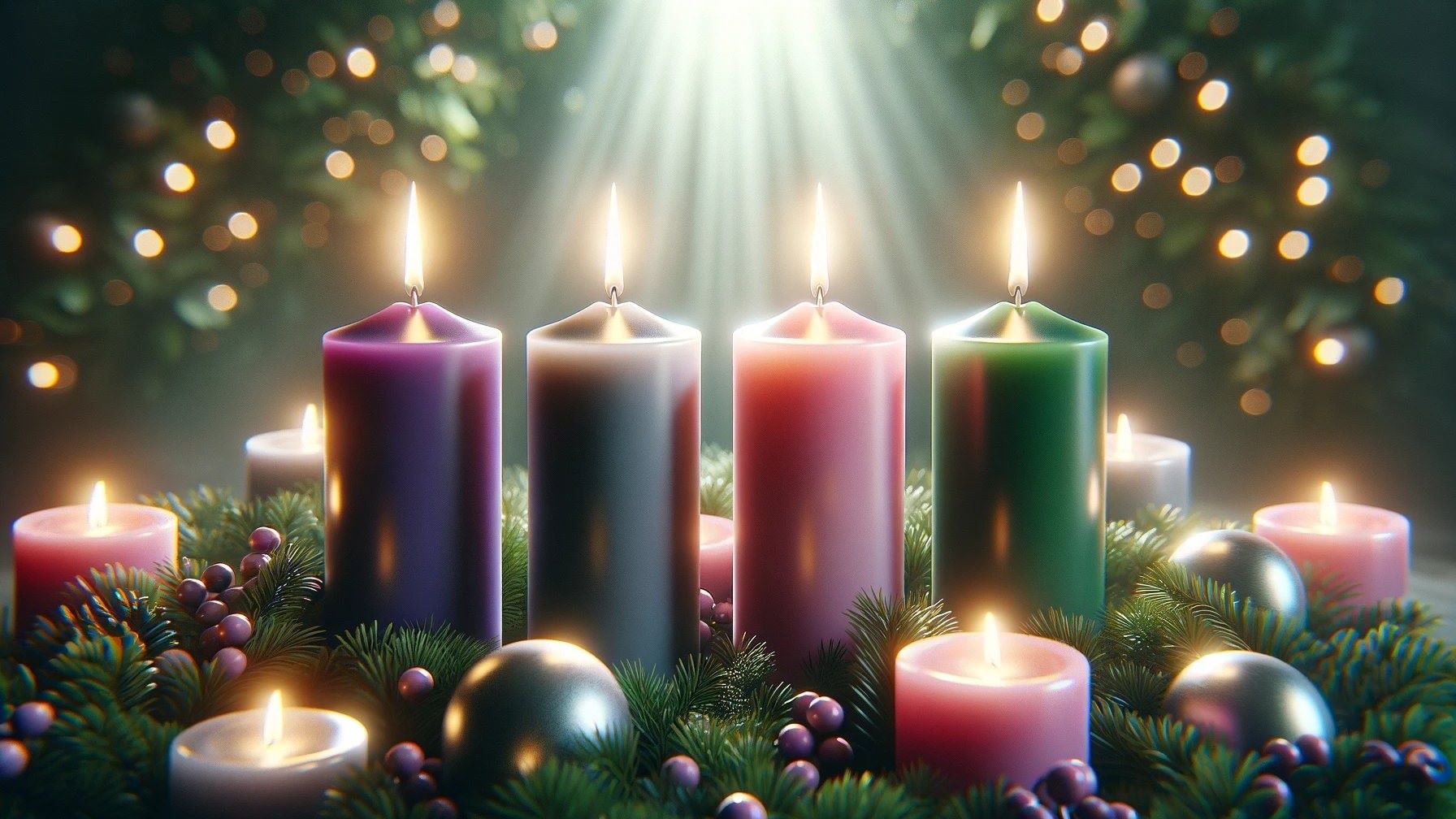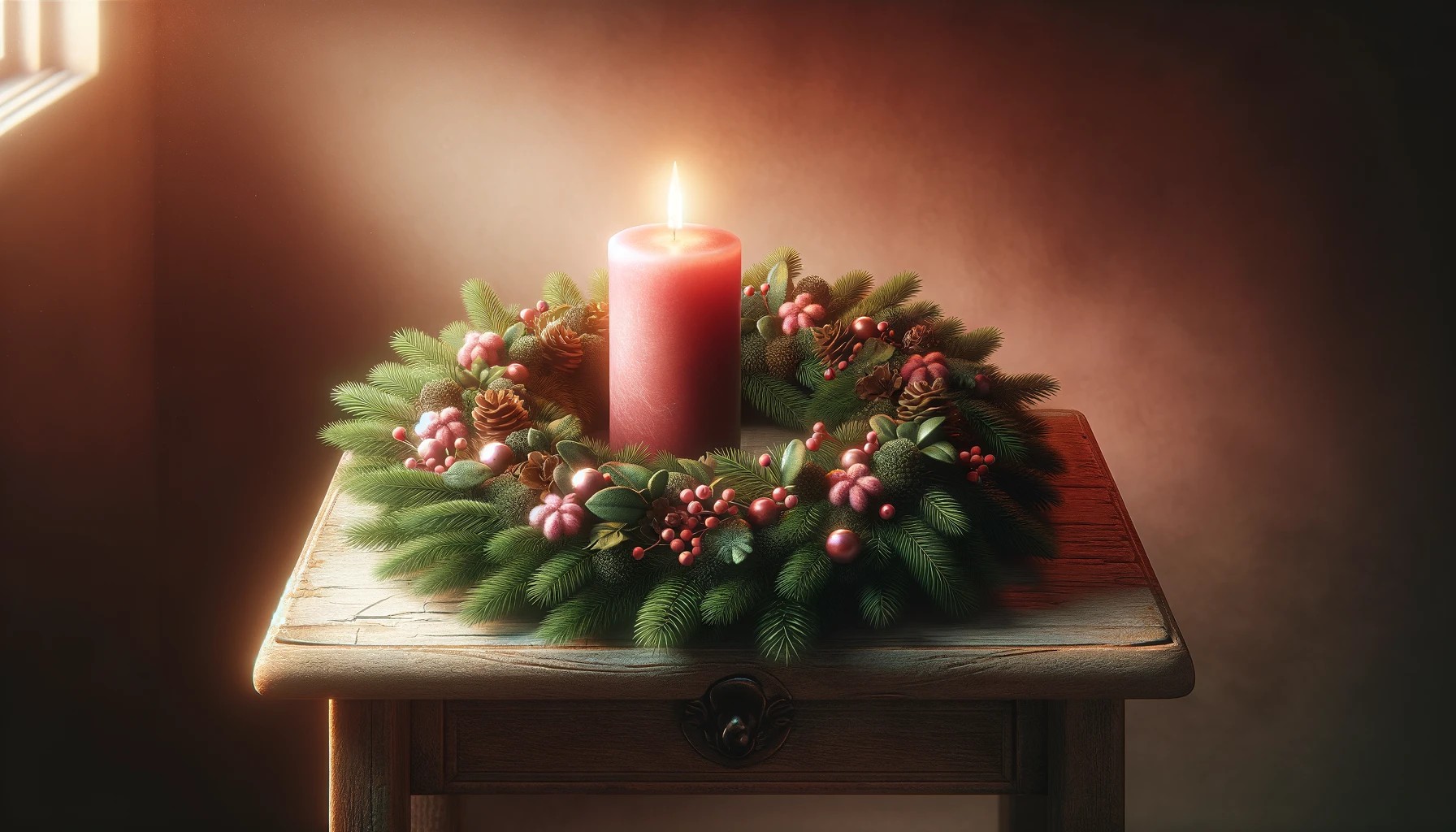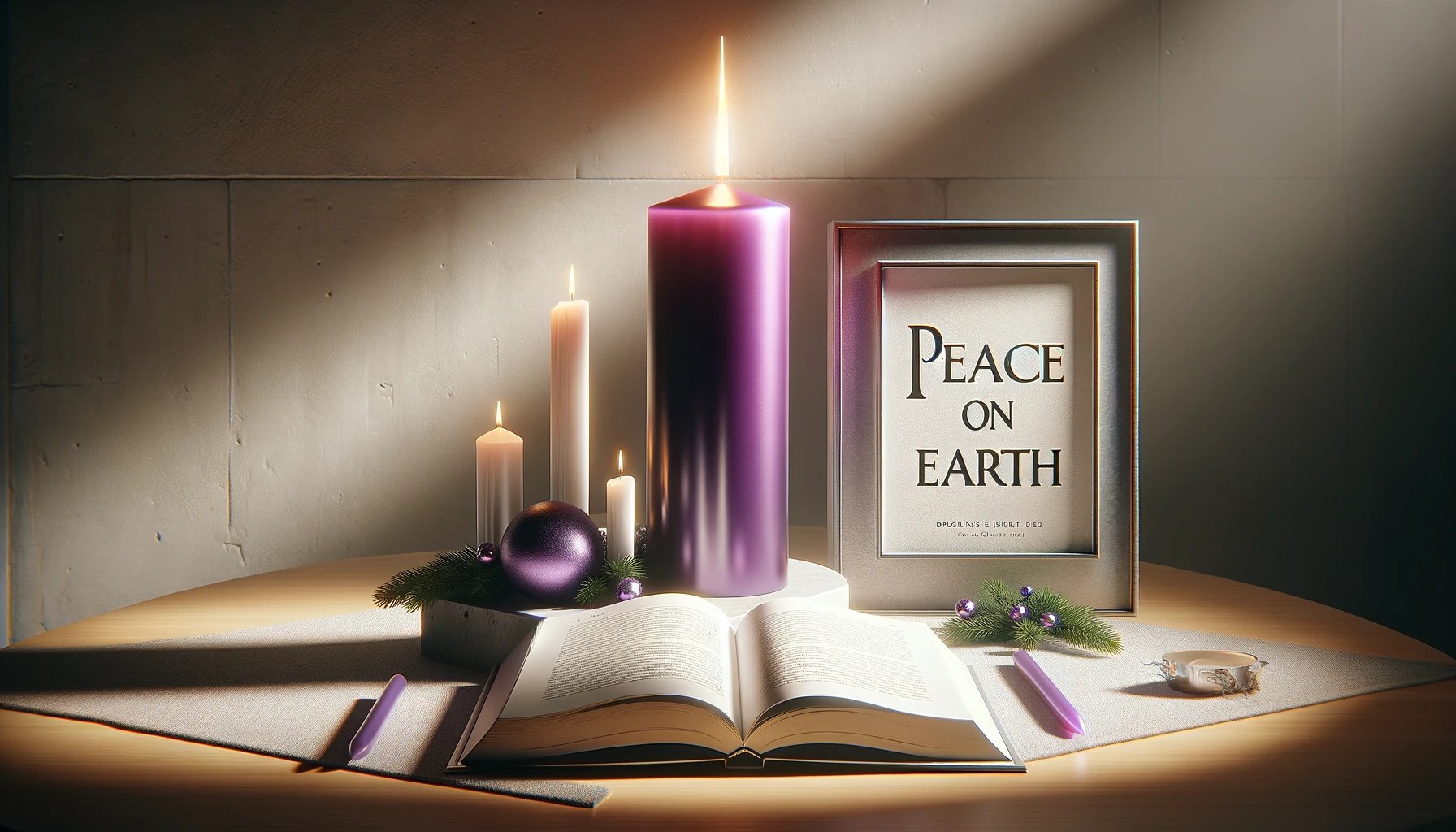Home>Special Themes>When To Light Advent Candles
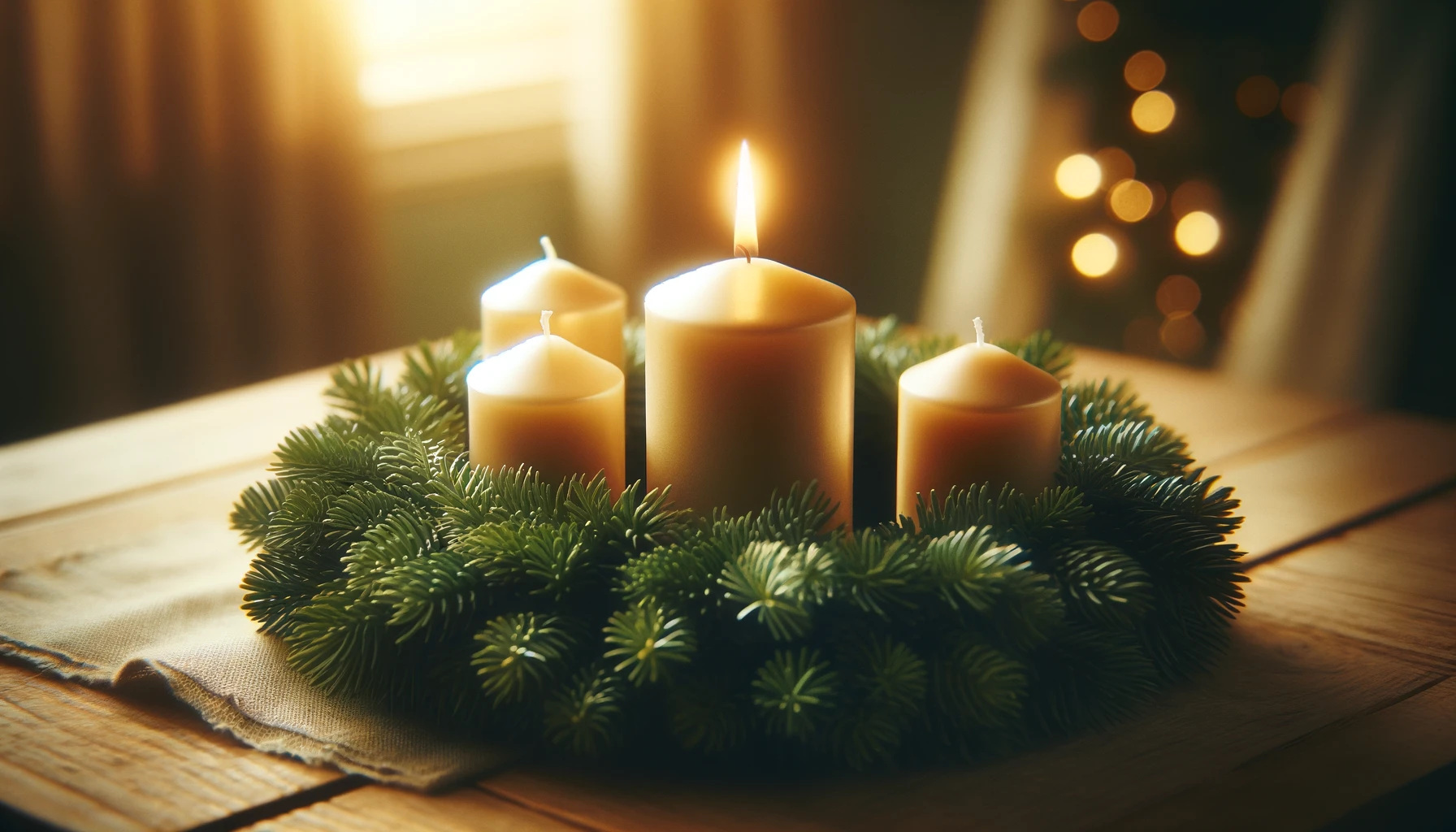

Special Themes
When To Light Advent Candles
Published: February 14, 2024
Peter Smith, Editorial Director at Christian.net, combines deep insights into faith, politics, and culture to lead content creation that resonates widely. Awarded for his contributions to religious discourse, he previously headed a major organization for religious communicators, enhancing dialogue on faith's societal impacts.
Discover the significance of lighting Advent candles and the special themes associated with each candle. Learn when to light Advent candles and embrace the tradition.
(Many of the links in this article redirect to a specific reviewed product. Your purchase of these products through affiliate links helps to generate commission for Christian.net, at no extra cost. Learn more)
Table of Contents
Introduction
Advent, derived from the Latin word "adventus," meaning "coming," is a season observed in many Christian churches as a time of expectant waiting and preparation for the celebration of the birth of Jesus at Christmas. One of the most cherished traditions during this period is the lighting of Advent candles. These candles hold profound symbolism and serve as a visual representation of the anticipation and hope associated with the arrival of Christ.
The act of lighting Advent candles dates back centuries and is deeply rooted in Christian history and tradition. As the world transitions into the festive holiday season, the lighting of these candles serves as a poignant reminder of the spiritual significance of Christmas. Understanding the history and symbolism behind Advent candles can enrich our appreciation for this timeless tradition and deepen our connection to the spiritual essence of the season.
The lighting of Advent candles is a cherished ritual that brings families and communities together, fostering a sense of unity and reflection. As the soft glow of each candle illuminates the darkness, it symbolizes the gradual emergence of hope and light in the midst of a world often overshadowed by challenges and uncertainties. This tradition transcends generations, offering a timeless reminder of the enduring message of faith, love, and renewal.
Throughout this article, we will delve into the rich history and symbolism of Advent candles, explore the significance of when and how to light them, and ultimately, gain a deeper understanding of the profound spiritual journey that these candles symbolize. Join us as we embark on a captivating exploration of the timeless tradition of lighting Advent candles and discover the profound meaning they hold for millions around the world.
Read more: Advent Prayers When Lighting The Candles
History of Advent Candles
The history of Advent candles can be traced back to the early 19th century in Germany, where the tradition of lighting candles during the Advent season began to take shape. It is believed that the concept of using candles to mark the passage of time leading up to Christmas originated from the medieval Germanic custom of lighting a large candle, known as the "Räuchermann," which was marked with 24 lines or notches, one for each day of December leading up to Christmas Eve.
The modern tradition of the Advent wreath, adorned with candles, emerged in the 19th century and quickly gained popularity among German Lutherans. The wreath, typically made of evergreen foliage to symbolize eternal life, was adorned with four candles, each representing one of the four Sundays leading up to Christmas. The lighting of these candles served as a visual countdown to the arrival of Christmas and provided a tangible way for families to mark the progression of the Advent season.
Over time, the tradition of the Advent wreath and candles spread beyond Germany and became a cherished custom in many Christian denominations around the world. The symbolism of the candles evolved to represent the themes of hope, peace, joy, and love, with an additional central candle, known as the Christ candle, symbolizing the light of Christ coming into the world.
The progression of lighting one candle each week allowed families and congregations to engage in a deliberate and reflective observance of the Advent season, fostering a sense of anticipation and spiritual preparation for the celebration of Christ's birth. The lighting of Advent candles became a cherished ritual, providing a visual and symbolic representation of the journey from darkness to light, mirroring the spiritual significance of the season.
As the tradition of Advent candles continued to spread, it became deeply ingrained in the fabric of Christmas celebrations, serving as a poignant reminder of the timeless message of hope and renewal that the birth of Christ represents. Today, the lighting of Advent candles remains a beloved tradition, uniting families and communities in a shared experience of faith, reflection, and joyful anticipation as they journey through the Advent season.
The history of Advent candles is a testament to the enduring power of tradition and the profound impact of simple yet meaningful rituals in shaping our spiritual experiences. This rich history provides a compelling backdrop for the timeless tradition of lighting Advent candles, offering a glimpse into the cultural and spiritual significance that continues to resonate with millions of people around the world.
Symbolism of Advent Candles
The symbolism of Advent candles holds deep spiritual significance, serving as a visual representation of the profound themes and emotions associated with the Advent season. Each aspect of the candles, from their number to their colors, carries symbolic meaning that enriches the spiritual journey of those who engage in the tradition.
Number of Candles
The most common arrangement of Advent candles includes four candles, often nestled within an evergreen wreath. Each candle represents a specific theme or virtue associated with the Advent season: hope, peace, joy, and love. The sequential lighting of these candles over the four Sundays leading up to Christmas symbolizes the progressive emergence of light and hope in the midst of darkness, mirroring the spiritual journey towards the celebration of Christ's birth.
Colors of the Candles
The colors of the Advent candles also hold symbolic significance. The first, second, and fourth candles are traditionally purple, representing penitence, preparation, and royalty. The third candle, lit on Gaudete Sunday, is pink and symbolizes joy. The Christ candle, often placed in the center of the wreath and lit on Christmas Eve or Christmas Day, is white, signifying the purity and light of Christ.
Read more: How To Light The Advent Candles
Evergreen Wreath
The evergreen wreath that cradles the Advent candles is laden with symbolism as well. Its circular shape represents eternity and the unending nature of God's love, while the evergreen foliage symbolizes the enduring life found in Christ. The wreath's placement of candles at equidistant points around its circumference signifies the equal importance of each week in the Advent season and the balanced progression towards the celebration of Christmas.
The Christ Candle
The central Christ candle, often larger than the others, represents the light of Christ coming into the world. Its placement in the center of the wreath signifies the culmination of the Advent season and the joyous arrival of the Savior on Christmas Day. The lighting of the Christ candle serves as a powerful symbol of the fulfillment of hope and the radiant presence of Christ's love and grace in the world.
The symbolism of Advent candles transcends mere decoration, offering a profound visual representation of the spiritual journey towards Christmas. Each element, from the number and colors of the candles to the evergreen wreath and the Christ candle, weaves together a tapestry of meaning that enriches the Advent experience, fostering a deeper connection to the timeless themes of hope, peace, joy, and love.
When to Start Lighting Advent Candles
The tradition of lighting Advent candles is deeply intertwined with the observance of the Advent season, which typically begins on the fourth Sunday before Christmas, known as Advent Sunday. This marks the official commencement of the Advent season and the start of the countdown to the celebration of Christ's birth. As such, the lighting of Advent candles traditionally commences on this significant day, symbolizing the initiation of the spiritual journey towards Christmas.
The first candle to be lit is the candle of hope, also known as the Prophet's Candle, signifying the anticipation of the coming Messiah. This initial lighting serves as a poignant reminder of the hope and expectation that characterized the period leading up to the birth of Jesus. As the soft glow of the first candle illuminates the Advent wreath, it signals the beginning of a season of reflection, preparation, and joyful anticipation.
Subsequent Sundays in the Advent season see the lighting of additional candles, each representing distinct themes such as peace, joy, and love. The progressive lighting of these candles over the four weeks leading up to Christmas mirrors the gradual emergence of light and hope in the midst of darkness, symbolizing the spiritual journey towards the celebration of Christ's birth.
The culmination of the Advent candle lighting tradition occurs on Christmas Eve or Christmas Day with the lighting of the Christ candle, also known as the Candle of the Incarnation. This central candle, often white in color, represents the purity and light of Christ coming into the world. Its illumination serves as a powerful symbol of the fulfillment of hope and the radiant presence of Christ's love and grace in the world.
The timing of when to start lighting Advent candles aligns with the broader rhythm of the Advent season, providing a tangible and symbolic way for individuals, families, and congregations to engage in a deliberate and reflective observance of the spiritual significance of Christmas. The tradition of lighting Advent candles serves as a timeless and meaningful ritual, fostering a sense of unity, anticipation, and spiritual preparation as the world eagerly awaits the joyous celebration of Christ's birth.
As the soft glow of each candle illuminates the darkness, it serves as a visual representation of the gradual emergence of hope and light, echoing the timeless message of faith, love, and renewal that the Advent season embodies. The act of lighting Advent candles not only enriches the spiritual journey towards Christmas but also fosters a deeper connection to the enduring themes of hope, peace, joy, and love that lie at the heart of the season.
How to Light Advent Candles
The act of lighting Advent candles is a cherished tradition that holds deep spiritual significance, symbolizing the gradual emergence of hope and light in the midst of darkness. The ritual of lighting these candles is a poignant and deliberate observance, inviting individuals, families, and congregations to engage in a reflective journey through the Advent season. Here's a step-by-step guide on how to light Advent candles, embracing the rich symbolism and spiritual essence of this timeless tradition.
-
Prepare the Advent Wreath: Begin by ensuring that the Advent wreath is placed in a central and visible location, serving as a focal point for the ritual. The wreath, typically adorned with evergreen foliage and four candles, represents the eternal life found in Christ and the themes of hope, peace, joy, and love.
-
Designate the Candle Order: Identify the arrangement of the candles, with the first, second, and fourth candles traditionally being purple, symbolizing penitence, preparation, and royalty, while the third candle is pink, representing joy. The central Christ candle, often white, signifies the light of Christ coming into the world.
-
Lighting the Candles: On the first Sunday of Advent, begin by lighting the first candle, also known as the Prophet's Candle, symbolizing hope. As the candle is lit, take a moment for reflection, embracing the anticipation of the coming Messiah and the hope that characterized the period leading up to the birth of Jesus.
-
Progressive Lighting: On each subsequent Sunday leading up to Christmas, light an additional candle, following the designated order. The sequential lighting of the candles mirrors the progressive emergence of light and hope, symbolizing the spiritual journey towards the celebration of Christ's birth.
-
Reflective Observance: As each candle is lit, take time for prayer, meditation, or the reading of relevant scriptures or passages that align with the themes represented by the candles. This reflective observance fosters a deeper connection to the spiritual significance of the Advent season and the timeless themes of hope, peace, joy, and love.
-
Culmination with the Christ Candle: On Christmas Eve or Christmas Day, light the central Christ candle, representing the purity and light of Christ coming into the world. This culminating act serves as a powerful symbol of the fulfillment of hope and the radiant presence of Christ's love and grace in the world.
The act of lighting Advent candles is not merely a ritual but a profound spiritual journey, inviting individuals to embrace the themes of hope, peace, joy, and love as they prepare to celebrate the birth of Jesus. This timeless tradition fosters a sense of unity, reflection, and joyful anticipation, enriching the Advent experience and deepening the connection to the enduring message of faith and renewal that the season embodies.
Read more: What Is An Advent Candle?
Conclusion
The tradition of lighting Advent candles is a timeless and cherished ritual that embodies the enduring themes of hope, peace, joy, and love. As we conclude our exploration of the rich history, profound symbolism, and meaningful observance of this tradition, we are reminded of the profound spiritual journey that Advent candles symbolize.
The act of lighting Advent candles serves as a poignant reminder of the anticipation and hope associated with the arrival of Christ, inviting individuals, families, and communities to engage in a reflective and deliberate observance of the Advent season. The symbolism of the candles, from their number and colors to the evergreen wreath and the central Christ candle, weaves together a tapestry of meaning that enriches the spiritual experience and fosters a deeper connection to the timeless themes of the season.
The history of Advent candles, rooted in centuries-old traditions and customs, provides a compelling backdrop for the enduring significance of this ritual. From its origins in Germany to its widespread adoption across various Christian denominations, the tradition of lighting Advent candles has transcended cultural and geographical boundaries, uniting millions in a shared experience of faith, reflection, and joyful anticipation.
As we journey through the Advent season, the act of lighting each candle represents a step closer to the celebration of Christ's birth, mirroring the gradual emergence of light and hope in the midst of darkness. This visual representation of the spiritual journey towards Christmas fosters a sense of unity and reflection, offering a tangible way for individuals to mark the progression of the season and prepare their hearts for the joyous celebration of Christ's birth.
In conclusion, the tradition of lighting Advent candles is a testament to the enduring power of tradition and the profound impact of simple yet meaningful rituals in shaping our spiritual experiences. As the soft glow of each candle illuminates the darkness, it serves as a visual representation of the gradual emergence of hope and light, echoing the timeless message of faith, love, and renewal that the Advent season embodies. The act of lighting Advent candles not only enriches the spiritual journey towards Christmas but also fosters a deeper connection to the enduring themes of hope, peace, joy, and love that lie at the heart of the season.
As we embrace this timeless tradition, may the soft glow of each candle serve as a beacon of hope and a reminder of the profound significance of the Advent season, guiding us towards the joyous celebration of the birth of Jesus and inspiring us to embody the timeless virtues symbolized by the candles.
